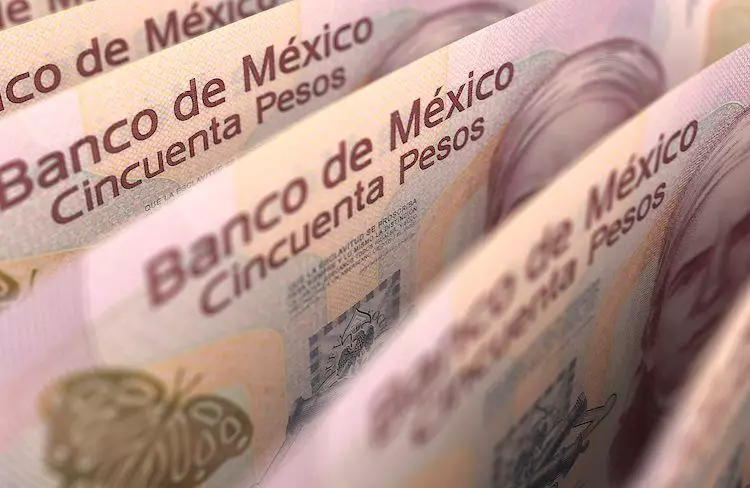The foreign currency markets are witnessing the Mexican Peso (MXN) exhibiting a notable resurgence, driven by a combination of economic factors and political developments. As recent data suggests, the performance of the Peso is expected to remain volatile, influenced by U.S. dollar (USD) trends and domestic policy decisions. This article delves into the underlying factors that have contributed to the Peso’s three-week peak and what it may entail for investors and policymakers alike.
Factors Behind the Peso’s Rise
Recent reports indicate that the Mexican Peso has climbed to its highest value in three weeks, an ascent triggered by a significant drop in the U.S. dollar. Expectations for a Federal Reserve interest rate cut have been mounting, with the CME FedWatch Tool revealing that there is currently a 43% probability of a 50 basis points reduction. This anticipation has placed various pressures on the dollar, leading to favorable conditions for the Peso.
Additionally, political uncertainties in Mexico have diminished following the approval of crucial judicial reforms. This development has bolstered investor confidence in Mexico’s economic stability, thereby enhancing the strength of the Peso. The combination of decreasing inflation figures—falling below 5% in August—and positive economic forecasts could further attract investment inflows.
The outlook for the USD/MXN exchange rate hinges on market sentiment and expectations for further Federal Reserve rate cuts. Upcoming data releases concerning Mexico’s economic performance, particularly the Aggregate Demand and Private Spending figures for Q2 2024, will provide additional clues regarding the Peso’s trajectory.
With inflationary pressures easing, speculations are brewing that the Bank of Mexico (Banxico) may consider further interest rate reductions. As highlighted in the September Citibanamex Survey, analysts predict that Banxico will cut rates to 10.25% in 2024 and down to 8.25% in 2025. Such adjustments would likely position Mexico’s monetary policy as more accommodative relative to that of the U.S., stimulating further depreciation of the dollar against the Peso.
Recent actions in the currency markets indicate that the USD/MXN pair is undergoing significant volatility. The recent pullback of more than 7,000 pips below the critical 20.00 psychological threshold underscores the rapid shifts in trader sentiment. Current market dynamics suggest that sellers have gained momentum, evidenced by bearish signals on technical indicators such as the Relative Strength Index (RSI).
Should the USD/MXN breakout below the August 23 low of 19.02, it could expose the pair to further declines, with the 50-day Simple Moving Average at 18.99 and the cycle low at 18.59 serving as critical support levels. On the opposite end, the bulls will need to clear the significant resistance at the 20.00 mark to pave the way for a bullish continuation, potentially leading to challenges at higher resistance levels of 20.22 and 20.57.
The Role of the Bank of Mexico
The Bank of Mexico plays a crucial role in steering the monetary policy that ultimately affects the Peso’s value. With a mandate to preserve the peso’s value and target an inflation rate close to 3%, Banxico’s decisions are critical in shaping investor confidence. The central bank conducts eight meetings annually, where interest rates are evaluated in light of U.S. Federal Reserve policies.
In an era marked by economic uncertainty, Banxico’s proactive measures during the COVID-19 pandemic, including pre-emptive rate hikes to mitigate depreciation, have set the stage for how it continues to navigate external economic pressures. The interplay between Banxico and Fed policies will undoubtedly impact the Peso’s trajectory moving forward.
Moreover, consumer sentiment indicators, such as the University of Michigan’s Consumer Sentiment Index, significantly influence economic fundamentals. With the index rising from 67.9 to 69.0, exceeding expectations, this reflects improved consumer outlook concerning personal finances and business conditions—key drivers of any economy.
As inflation expectations likewise dipped from 2.8% to 2.7% over a one-year horizon, the alignments within consumer confidence, coupled with easing inflation, indicate a potentially robust environment for consumer spending ahead. A revitalized spending landscape could enhance economic growth in Mexico, further supporting a stronger Peso.
The Mexican Peso is experiencing a resurgence, fueled by a confluence of declining U.S. dollar strength, easing political uncertainties, and anticipations of accommodating monetary policies. Given the current economic indicators, including inflation trends and consumer sentiment, market participants will be closely observing upcoming data and central bank meetings. Only time will tell if this increase is a sustained trend or a temporary rebound, but for now, the Peso stands at a critical juncture amid evolving market conditions.


Leave a Reply